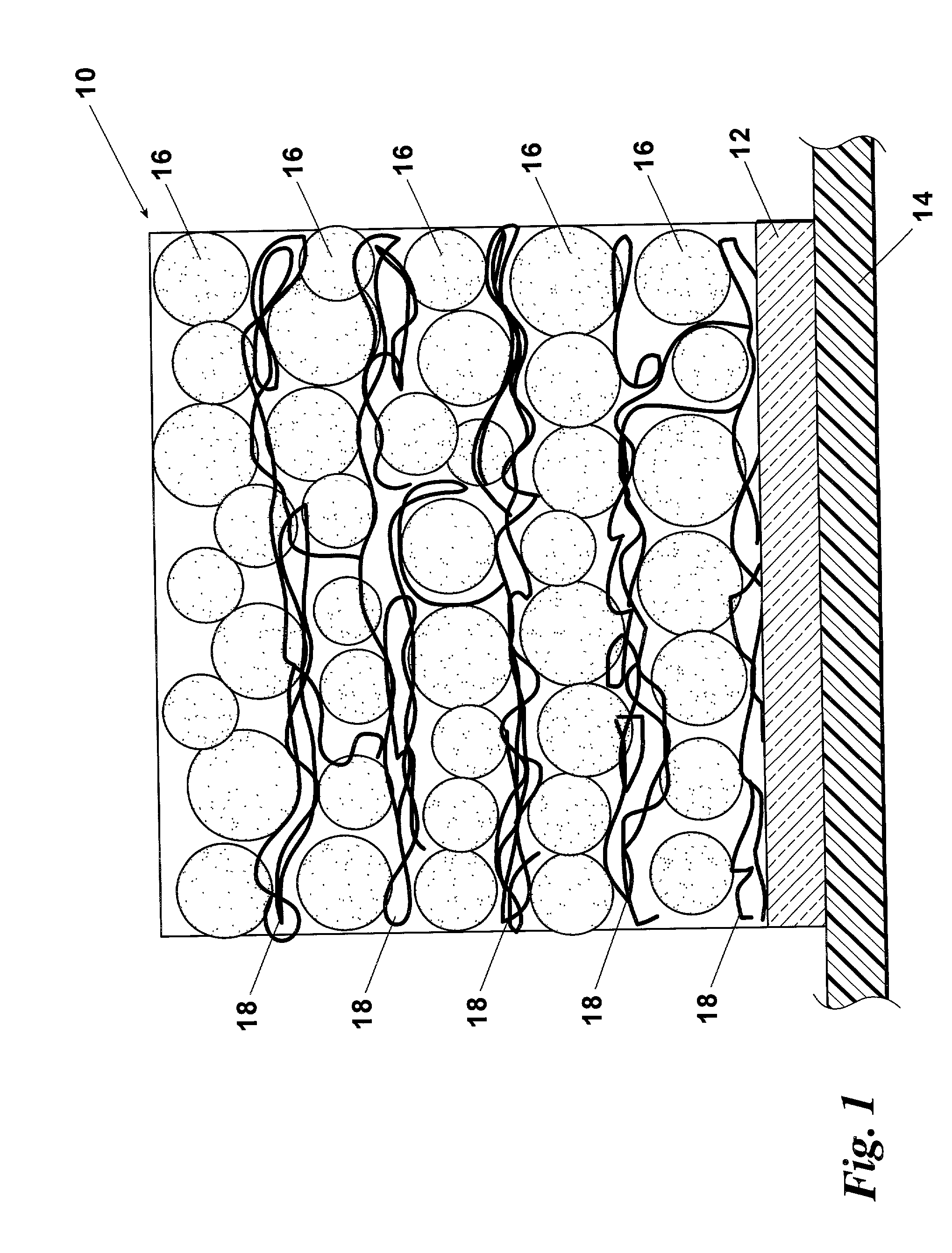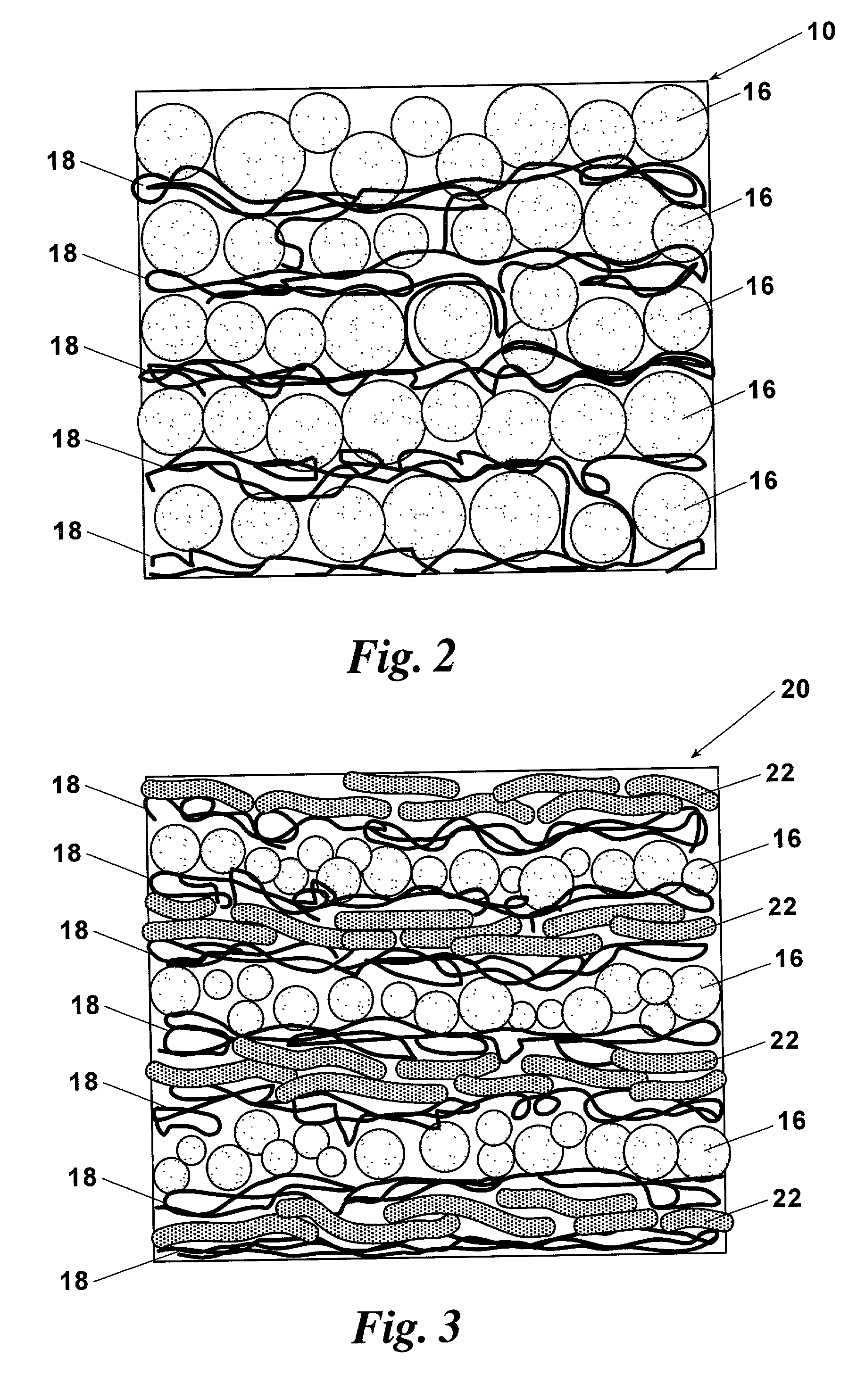Assembly of free-standing films using a layer-by-layer process
a technology of film assembly and layer by layer, which is applied in the field of assembly of freestanding films using a layer by layer process, can solve the problems of limiting the minimum thickness of a film, limiting the application of films produced through this process, and limited process
- Summary
- Abstract
- Description
- Claims
- Application Information
AI Technical Summary
Benefits of technology
Problems solved by technology
Method used
Image
Examples
example 2
[0058] Layer-by-layer assembly affords manipulation of the order of deposited layers. To strengthen the film, every-other layer of magnetite may be replaced with a layer of exfoliated montmorillonite clay platelets, the assembly of n layers of which is hereinafter referred to as (C / M).sub.n. Clay platelets have a thickness of 1.0 nanometer, while extending 150-300 nanometers in the other dimensions. On polyelectrolytes, they formed a layer of overlapping alumosilicate sheets with an average thickness of 3.8.+-.0.3 nanometers. Being adsorbed virtually parallel to the surface of the substrate, their large size allowed them to cover approximately 400 nanoparticles at once, thereby cementing the assembly. (C / M).sub.30 free-standing film prepared following the procedure outlined above could be easily picked up with tweezers, transferred, cut, moved around a solid surface, and handled in any other way. Taking advantage of this architecture, free standing films with as few as 5 repeating C...
PUM
| Property | Measurement | Unit |
|---|---|---|
| Dispersion potential | aaaaa | aaaaa |
| Affinity | aaaaa | aaaaa |
Abstract
Description
Claims
Application Information
 Login to View More
Login to View More - R&D
- Intellectual Property
- Life Sciences
- Materials
- Tech Scout
- Unparalleled Data Quality
- Higher Quality Content
- 60% Fewer Hallucinations
Browse by: Latest US Patents, China's latest patents, Technical Efficacy Thesaurus, Application Domain, Technology Topic, Popular Technical Reports.
© 2025 PatSnap. All rights reserved.Legal|Privacy policy|Modern Slavery Act Transparency Statement|Sitemap|About US| Contact US: help@patsnap.com



